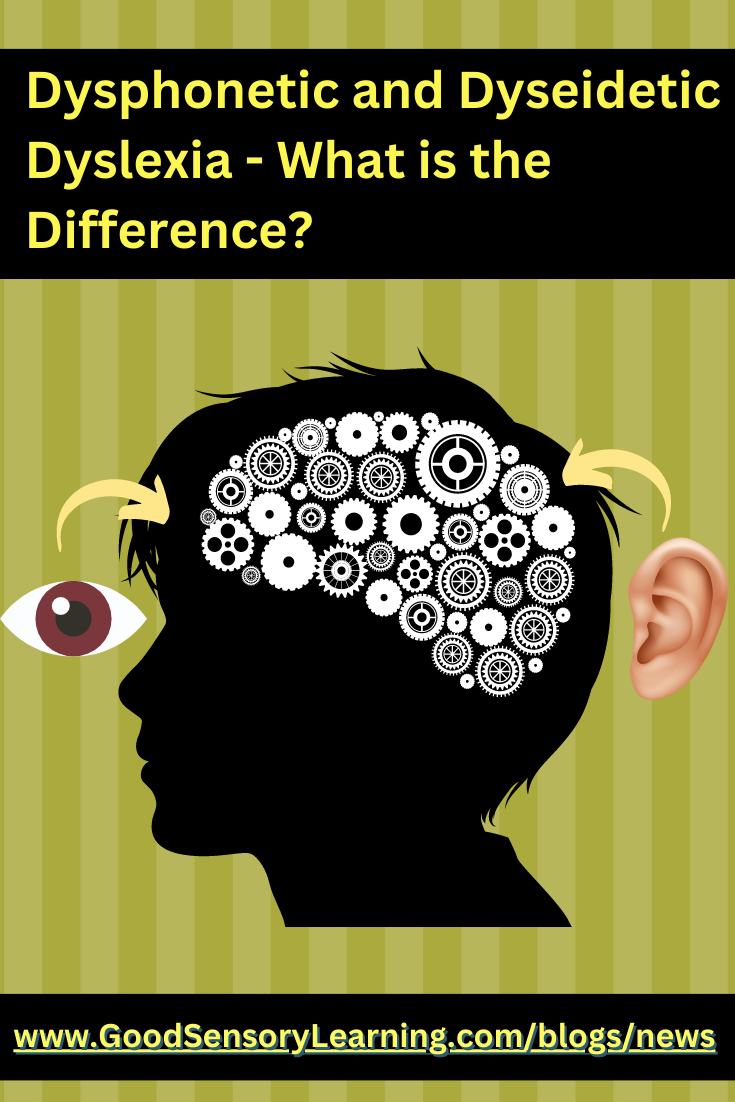Dysphonetic and Dyseidetic Dyslexia - What is the Difference?
Posted by Erica Warren on
Meeting the needs of a student with dyslexia can be a complicated process because most require an individualized approach. Although two students might struggle with common symptoms such as word reversals or spelling problems, the underlying causes can be remarkably different. This is true because there are a variety of cognitive-based deficits that can cause a diagnosis of dyslexia. The two most common, core difficulties lie within the processing of either auditory or visual information.
Dysphonetic Dyslexia
Those with dysphonetic dyslexia experience difficulties connecting sounds to letter symbols, sounding out words, and spelling words phonetically. Although hearing is not impaired, the problem lies in the way the brain processes this auditory information. For example, a student with dysphonetic dyslexia may struggle to discriminate the difference between the short vowel sounds.
Dyseidetic Dyslexia
In contrast, those with dyseidetic dyslexia do not have difficulties with processing auditory information. Instead, their brains struggle to make sense of visual input. Sometimes called surface dyslexia or visual dyslexia, the dyseidetic student mis-sequences letters in words, finds it difficult to visually track across a page of text, process visual information, and many spells words the way they sound. For example, the word “chaos” might be spelled “kaos.”
Understand the Cognitive-based Causes of Dyslexia
For those with dyslexia, a cookie-cutter approach often does not work. Instead, understanding the core culprit behind a student's academic challenges can help define a tailored, remedial approach that addresses the specific cause.
What Can I Do to Help Students with Dyslexia?
|
Strategies for Success
|
|
|
Dysphonetic Dyslexia
|
Dyseidetic Dyslexia
|
| Assess the specific auditory processing difficulties and then use an Orton-Gillingham or phonics-based instructional approach | Help students learn memory strategies so they can remember sight words. |
| Exercise the core cognitive-based deficits. | Do visual processing exercises and strengthen other core cognitive-based deficits. |
| Pursue formal testing by the local school or a professional in your community so that reasonable, academic accommodations can be provided. | Pursue formal testing by the local school or a professional in your community so that reasonable, academic accommodations can be provided. |
| Use audiobooks while reading along to improve sound-symbol association and whole word recognition. | Use audiobooks while reading along to improve visual tracking, visual attention, and whole-word recognition. |
| Use voice-to-text technology so that spelling doesn’t hinder or slow down the thought process. | Use voice-to-text technology so that spelling doesn’t hinder or slow down the thought process. |
| Address any other difficulties such as problems with working memory, executive functioning, rapid automatic naming (RAN), recalling names, language processing note-taking. Furthermore, be sure to address any emotional and physical symptoms and to build their resilience. | |
If you want to read a blog that discusses other types of dyslexia, CLICK HERE.
How Can the Core Cognitive Processing Areas Be Strengthened?
At Good Sensory Learning, we offer an ever-growing selection of cognitive remedial tools that can be used by practitioners, teachers, and parents. CLICK HERE to view our affordable options.
I hope you found this blog helpful.
Cheers, Erica
Dr. Erica Warren is the author, illustrator, and publisher of multisensory educational materials at Good Sensory Learning. She is also the director of Learning to Learn and Learning Specialist Courses.
- Blog: https://goodsensorylearning.com/blogs/news
- YouTube Channel: https://www.youtube.com/user/warrenerica1
- Executive Function Podcast: https://goodsensorylearning.com/pages/the-personal-brain-trainer-podcast-with-dr-erica-warren
- Store: http://www.Goodsensorylearning.com/
- Courses: http://www.learningspecialistcourses.com/
- Newsletter Sign-up: https://good-sensory-learning.kit.com/drericawarren



